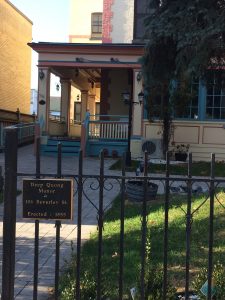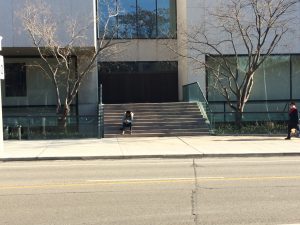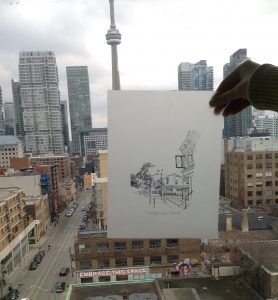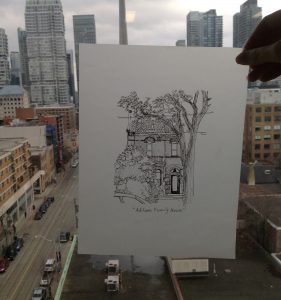Entry #1
Takaronto is the Mohawk word for ‘where there are trees standing in the water’. Now known as Toronto, the original keepers of this land were the Haudenosaunee and most recently the Mississaguas of the New Credit. We need to remember this so that we can walk respectfully as guests.
The focus of this residency will be on land, indigeneity, culture and community. I am going to approach the theme through a course I am teaching at OCAD University, entitled: Art and Design Education: Community. We will move outside of the classroom and go for walks/observations in the area around the university so that students can gain an appreciation for the original keepers of the land and what it looks like now as a settler nation. The impetus for this project is to encourage students to appreciate the land we are on and to consider the land they are from, paying close attention to their identifications around race, culture and indigeneity.
Prior to the walks, we read Leanne Betasamosake Simpson’s article, Land as Pedagogy. We discussed the article in class and I encouraged students to begin thinking about cultural narratives of learning from the land. For the walks, I wanted students to experience this walk as a flanuear of sorts, or as a discovery walk in the urban environment, taking a moment to hear the sweetness of squirrels scurrying to find food and to look up in a fall coloured tree to see the soft bellies of sparrows.
For the project I asked students to consider the following questions as they developed their narrative on the walks: what does it mean to be an immigrant on native land? What does it mean to be Black, Asian, Latino, etc., in Canada? What land do you feel at home on? In this project, I encouraged students to make it personal, bring it home and express a story of land, race and culture that would otherwise go untold. The outcomes from this project were written and visual. As part of this residency, each post will be documented and discussed.



